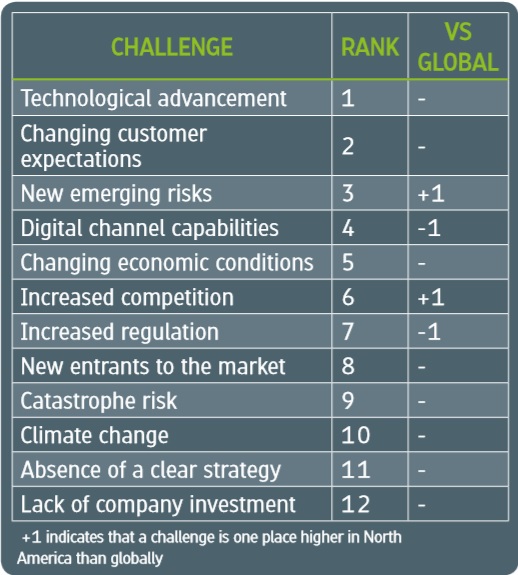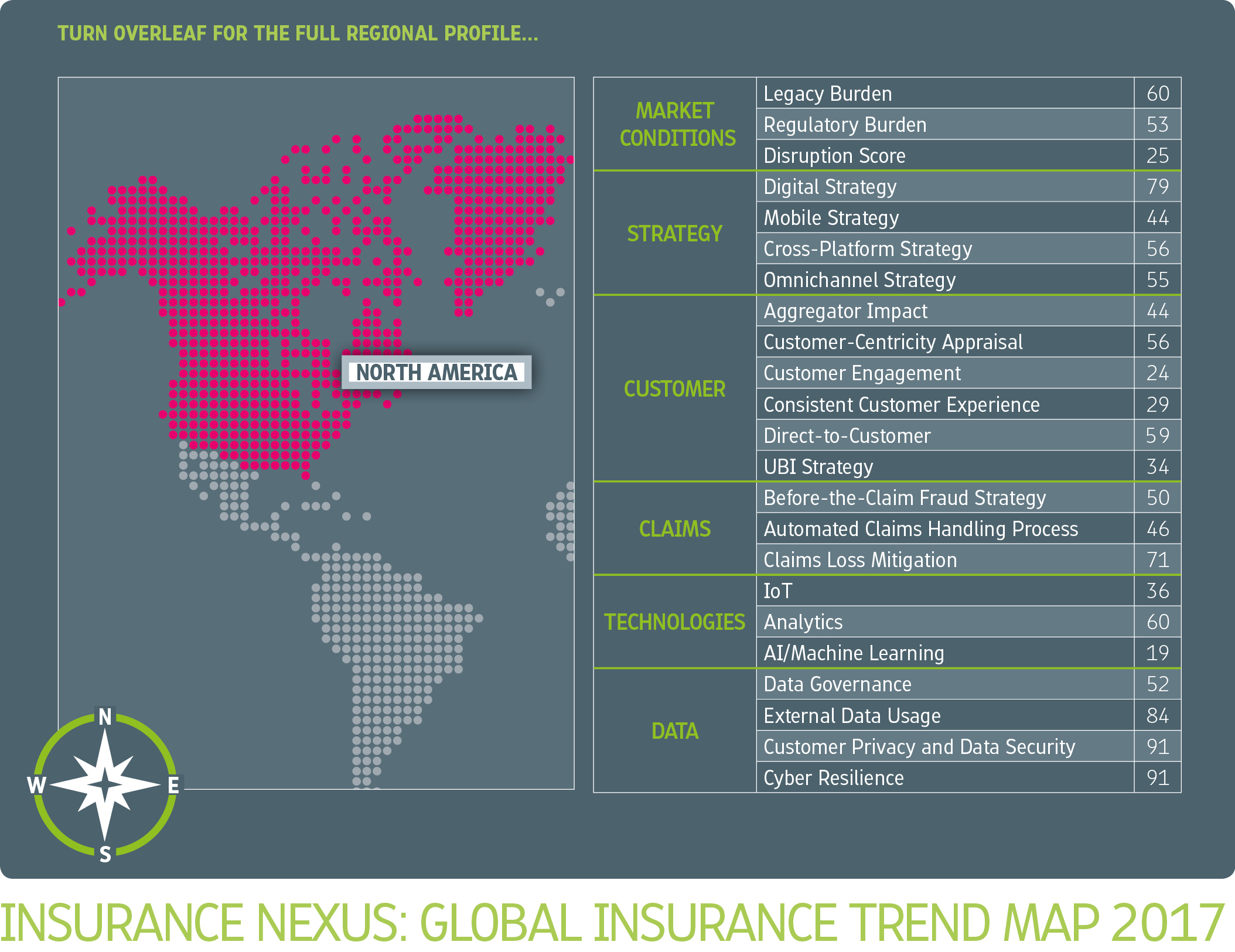Empowering Health Through Blockchain
It’s time to demand innovative solutions that leverage enhanced benefit plan design with emerging technology and contextual data.

It’s time to demand innovative solutions that leverage enhanced benefit plan design with emerging technology and contextual data.

Get Involved
Our authors are what set Insurance Thought Leadership apart.
|
Partner with us
We’d love to talk to you about how we can improve your marketing ROI.
|

Steven Schwartz is the founder of Global Cyber Consultants and has built the U.S. business of the international insurtech/regtech firm Cyberfense.
The process that many insurers currently use to capture underwriting data illustrates why digitization alone isn’t enough.

Get Involved
Our authors are what set Insurance Thought Leadership apart.
|
Partner with us
We’d love to talk to you about how we can improve your marketing ROI.
|

Laurie Kuhn is COO and cofounder of Flyreel, the most advanced AI-assisted underwriting solution for commercial and residential properties. She brings 20-plus years of experience in digital innovation to Flyreel, where she leads the company’s product, marketing and operations strategies.
Today's products must be customized, inexpensive and simple to configure and understand -- and insurtech makes all three possible.

Get Involved
Our authors are what set Insurance Thought Leadership apart.
|
Partner with us
We’d love to talk to you about how we can improve your marketing ROI.
|

Zeynep Stefan is a post-graduate student in Munich studying financial deepening and mentoring startup companies in insurtech, while writing for insurance publications in Turkey.
Social media has led to less human interaction, not more. It has suppressed human development, not stimulated it. We have regressed.

Get Involved
Our authors are what set Insurance Thought Leadership apart.
|
Partner with us
We’d love to talk to you about how we can improve your marketing ROI.
|

Vivek Wadhwa is a fellow at Arthur and Toni Rembe Rock Center for Corporate Governance, Stanford University; director of research at the Center for Entrepreneurship and Research Commercialization at the Pratt School of Engineering, Duke University; and distinguished fellow at Singularity University.

In Silicon Valley, a maxim is that "you have to eat your own dog food." In other words, you have to continually use your own products, your own sales channels, your own customer support so you can experience as many of your flaws as possible before you inflict them on customers.
That sort of self-testing has, it seems to me, been absent from insurance for, oh, centuries. But I saw a ray of hope two weeks ago when I was speaking at a gathering of global insurance leaders in Zurich. After I laid out my vision of how digitization strips industries down to their essences and then allows them to be organized in new ways that don't have to include existing products or even companies (bye bye, Sears, Kodak and others too slow to adapt), a member of the C-suite from a major life insurance company told me about a recent epiphany.
He had decided to buy a supplemental life insurance policy and went through his company's normal channels. But he couldn't make heads or tails of some of the terminology and found the process so long and complicated that he gave up.
"And if I can't figure out how to buy a policy, then what chance do our poor customers have?" he said. His company is now going to do better, he resolved. Much better.
A study that Chunka Mui and I cited in Billion Dollar Lessons: What You Can Learn From the Most Inexcusable Business Failures of the Last 25 Years found that 80% of executives thought their product was the best in the market—and that 8% of customers agreed.
We have, thus, counseled many executives to continually test all parts of their businesses as a customer would, without any of the special treatment that a C-suiter could easily get to smooth over problems. Those executives wind up with a much better sense of how they really stack up and remove all sorts of barriers to sales.
It's time that the insurance industry launched into a big meal of dog food. Products can be better, much better. I hope the process has begun in earnest.
Have a great week.
Paul Carroll
Editor-in-Chief
Get Involved
Our authors are what set Insurance Thought Leadership apart.
|
Partner with us
We’d love to talk to you about how we can improve your marketing ROI.
|

Paul Carroll is the editor-in-chief of Insurance Thought Leadership.
He is also co-author of A Brief History of a Perfect Future: Inventing the Future We Can Proudly Leave Our Kids by 2050 and Billion Dollar Lessons: What You Can Learn From the Most Inexcusable Business Failures of the Last 25 Years and the author of a best-seller on IBM, published in 1993.
Carroll spent 17 years at the Wall Street Journal as an editor and reporter; he was nominated twice for the Pulitzer Prize. He later was a finalist for a National Magazine Award.
The fundamental question is how insurers can capture the market for financial wellness before competitors in other industries do.

In recent years, insurers have understood that many Americans face real financial challenges – whether saving for retirement or making ends meet on a monthly basis. Yet, no single company has differentiated itself in serving customer needs.
Many companies that have a stated goal of improving financial wellness have focused instead on improving financial literacy. As a result, they haven’t seen as many improved outcomes as they’d hoped. Others, who have tried to remove customer barriers to action, have found that their efforts sometimes lead to unintended consequences (e.g., auto enroll and auto increase leading to increased hardship loans because of inattention to underlying cash management issues).
In addition, those competing for share of wallet in the financial wellness space have traditionally taken an “inside-out” view, highlighting their own product features but leaving customers to sort out which types of products they can piece together to meet their varied needs. Moreover, many traditional financial wealth advisers have focused on the narrow, super-affluent customer segment, whereas a broad swath of customers who desire advice and guidance remain effectively un(der) served.
According to a 2017 PwC Financial Wellness survey, 53% of respondents who are currently employed felt stress dealing with their personal financial situation, and 46% of respondents indicated that financial stress was their primary stressor.
As of now, recent advances in technology and analytics, including in robo-assisted advice (made possible by artificial intelligence and advanced analytics), are dramatically reducing the cost of providing financial advisory services, creating a sizable market opportunity as competitors can develop sustainable business models to target a much wider range of customers.
At the same time, advances in digital experiences available to consumers have started to heighten customer expectations about the transparency, accessibility and personalization of financial advisory solutions for anyone serving this space, including insurers.
Finally, technology advances and transformative portal and services architectures are paving the way for platform economies that allow connectivity across multiple providers.
Delivering integrated financial wellness solutions
To win customers, insurers must understand what customers want, rather than focus simply on what their own products can do. In the short term, this means addressing the need most customers have to maximize their monthly budgets. In the longer term, customers want to prepare for retirement, potential emergencies, healthcare needs, college expenses and transferring wealth to younger generations.
While customer needs may seem simple and straightforward, providing advice about them is anything but, given the complex and changing economic and financial conditions facing younger workers in particular. On average, millennials are saddled with almost 300% more student debt than their parents and are earning 2.9% in average annual returns on 401(k) plans, compared with 6.3% returns for Baby Boomers. Many younger workers will need to work longer; in fact, federal data suggests that the average millennial will need to work until age 75.
See also: Ethics of Workplace Wellness Industry
Helping customers understand and manage their financial wellness suggests a need for a broad solution centered on them (not a basket of off-the-shelf products). This solution includes:
Competing with others for integrated financial wellness
While retail banks, wealth managers and financial planners are typically viewed as being the best-equipped to help individuals achieve their financial goals, many of them have focused primarily on helping wealthy customers accelerate their wealth accumulation and secure access to credit, rather than the protection aspects of wellness.
More recently, they have started to consider the implications of a broader definition of financial wellness; in contrast, employers have been concerned about their employees’ holistic financial wellness and how it affects their productivity for years.
Millennials are expected to make up 50% of the workforce by 2020 and 75% by 2025, and the extent of their financial stress is particularly concerning for employers. An alarming 47% of those who feel financial stress say that they’re either missing work occasionally or their productivity at work has been affected by financial worries, and even more of them – 50% – said that they’re spending three or more hours each week at work dealing with personal financial issues.
Employers will continue to be a critical touchpoint for insurers because they serve as an effective point of access to deliver financial wellness programs to employees, and have access to a significant amount of employees’ personal financial information. Employees tend to view employers as an objective party that seeks to protect their financial well-being rather than profit from them, and employer effectiveness in delivering financial wellness solutions can improve employees’ perception of and satisfaction with their compensation (which in turn has a real impact on a company’s performance).
The competitive landscape
Considering customers’ holistic needs, the size of the financial wellness market and employer motivation to provide employees financial wellness programs, the fundamental question is how insurers can capture the market before competitors do.
It won’t be easy. The financial wellness marketplace is crowded. It ranges from traditional, established players like financial advisers at financial institutions, retirement providers, individual and group insurers all the way to consulting firms, health insurers and emerging insurtech companies.
This competitive landscape is especially complex because these institutions’ capabilities are fluid, not static; many of them form partnerships and make acquisitions to obtain leading-edge capabilities and frequently revise their business models to incorporate emerging forms of innovation.
As in the market as a whole, seamless and personalized digital delivery remains vital to provide customers a worthwhile, user-friendly experience, as well as generate actionable insights insurers can use to tailor and enhance their financial wellness offerings.
See also: A Wellness Program Everyone Can Love
We believe that whoever gains a meaningful share of the financial wellness market will:
Implications
To compete effectively, insurers will need to determine a distinct basis for differentiation and focus investment in those capabilities that are key to strengthening their way to play in the market. Potential ways to play include:
Real opportunity exists for insurers in the financial wellness space as the market’s current business model strains under changing socioeconomic conditions and a challenging investment environment. While the financial wellness niche was siloed in the past, forward-looking insurers must strengthen their market strategy, offerings and capabilities to gain market share in this highly crowded, competitive and converging marketplace.
This report was written by Jamie Yoder, Juneen Belknap, Kent Allison and Caitlin Marcoux.
Get Involved
Our authors are what set Insurance Thought Leadership apart.
|
Partner with us
We’d love to talk to you about how we can improve your marketing ROI.
|

Jamie Yoder is president and general manager, North America, for Sapiens.
Previously, he was president of Snapsheet, Before Snapsheet, he led the insurance advisory practice at PwC.
Disruption in North America – while certainly present – has not yet reached the fever pitch that it has elsewhere.

 In North America, the top external challenges for the insurance sector as a whole follow the global trend from our earlier post on industry challenges, with technological advancement and changing customer expectations taking first and second place, except that in third place we find new emerging risks.
In comparison, new risks comes fourth globally and only makes sixth place in Europe – which, as we indicated in our Europe profile, likely reflects some parts of the world being more exposed to disasters (and hence concomitant risks) than others. Further down the table, increased competition moves up a place, knocking increased regulation down one spot to seventh.
ii) The Internal Challenges: North America
Looking internally, the top challenges reflect the global trend we outlined in our earlier post on industry challenges, except that legacy systems wrests the top slot from lack of innovation capabilities (which, by way of comparison, comes first in Europe and Asia-Pacific).
In North America, the top external challenges for the insurance sector as a whole follow the global trend from our earlier post on industry challenges, with technological advancement and changing customer expectations taking first and second place, except that in third place we find new emerging risks.
In comparison, new risks comes fourth globally and only makes sixth place in Europe – which, as we indicated in our Europe profile, likely reflects some parts of the world being more exposed to disasters (and hence concomitant risks) than others. Further down the table, increased competition moves up a place, knocking increased regulation down one spot to seventh.
ii) The Internal Challenges: North America
Looking internally, the top challenges reflect the global trend we outlined in our earlier post on industry challenges, except that legacy systems wrests the top slot from lack of innovation capabilities (which, by way of comparison, comes first in Europe and Asia-Pacific).
 Innovation is, at its heart, customer-driven, so, in the course our regional profiles, we compare the insurer-customer relationship in North America with what we find in our other key regions – and this may well explain the different positions ascribed to lack of innovation capabilities in their respective challenge tables. The parallel suggestion is that legacy systems play more of a role in North America, which is another theme our North America profile explores.
iii) Insurer Priorities: North America
These are the priority areas on which North American insurers lead our other regions, out of our shortlist of 15 priority areas as presented in our earlier post on insurer priorities:
Innovation is, at its heart, customer-driven, so, in the course our regional profiles, we compare the insurer-customer relationship in North America with what we find in our other key regions – and this may well explain the different positions ascribed to lack of innovation capabilities in their respective challenge tables. The parallel suggestion is that legacy systems play more of a role in North America, which is another theme our North America profile explores.
iii) Insurer Priorities: North America
These are the priority areas on which North American insurers lead our other regions, out of our shortlist of 15 priority areas as presented in our earlier post on insurer priorities:
 iv) North America Top Trumps
The table below is in the style of Top Trumps, with a regional score for each characteristic — we have tables for Europe and Asia-Pacific in their respective profiles, too.
iv) North America Top Trumps
The table below is in the style of Top Trumps, with a regional score for each characteristic — we have tables for Europe and Asia-Pacific in their respective profiles, too.
 See also: Global Trend Map No. 14: Regulation
Today's discussion of North America falls into five short chapters, the first two of which we will be covering in today's post:
See also: Global Trend Map No. 14: Regulation
Today's discussion of North America falls into five short chapters, the first two of which we will be covering in today's post:
"Innovative products and the market segments they support are underpinning the design of new insurtech business models, with companies like Lemonade, Slice, TROV, Cuvva, Surify and others establishing new model footholds in the market." — Denise Garth, SVP at MajescoWhile insurers are already having to up their game to keep their underwriting customers, the overall turn toward insurtech is still in its infancy and also varies considerably from region to region. So, at what stage is this customer-led disruption in North America? The indicators we have gathered across this content series lead us to believe that North America is late – though only marginally – compared with Europe and Asia-Pacific, and we will substantiate this perspective in due course. Looking at things at the highest level, our most telling stat is the disruption score for North America. Only a quarter of (re)insurers in North America indicated that they were losing market share to new entrants, whereas this figure rose to nearly half of (re)insurers in Asia-Pacific. Whether interpreted literally or as an indication of carriers’ current mood, this implies that disruption – while certainly present – has not yet reached the fever pitch in North America that it has elsewhere, and potentially explains the lower prominence assigned to lack of innovation capabilities among the internal challenges for the region. Speaking primarily from a P&C/general perspective, Stephen Applebaum acknowledges that the U.S. market at least may be somewhat of a laggard, although he is careful to distinguish it from Canada. He places the Canadian market ahead of the U.S. in terms of innovation and technology adoption. Applebaum ascribes the notional leadership of the Canadian market to a mixture of culture, infrastructure and population size (Canada having approximately 10% of the population of the U.S.). We also call attention to Canada’s different approach to the broker market, its different regulatory regime and its different methodologies for data exchange. All of this said, though, the sorts of consumer needs that insurers in each market are trying to serve are fundamentally the same. In any case, regardless of where the North American market stands today, Applebaum believes that a huge amount will change over the coming 18 months and beyond. This is due partly to the steady globalization of technology (Applebaum cites as an example of this the recent push by Italian Octo Telematics into the U.S. market), partly to the size of the prize inevitably attracting takers. This prize would appear to be more tantalizingly poised in the U.S. than elsewhere, if indeed there is a slight lag in that market, as this makes it easier still for light-footed new entrants to outflank incumbents and capture market share. We have seen the rise of several high-profile insurtechs in the U.S., such as Lemonade on the homeowner and Insureon on the small-business side, and we note also the recent estimate that nearly half of investment money for insurtech in 2016 went to U.S. companies.
"You have to change your culture and embrace experimentation. We’ve set up labs around the world where we incubate innovation. It’s about embedding it through the employee base and being attuned to the customer. And it has to be top-down to be effective." — Cindy Forbes, EVP and chief analytics officer, Manulife FinancialIf this gives the impression of a silently massing army waiting to storm the sleepy, unguarded border forts of insurance, then that is certainly a long way from the truth. Incumbent insurers in the U.S. are waking up to the threat of disruption in a big way. Applebaum, once again talking primarily from a P&C/general perspective, explains the twofold consideration going through insurers’ minds: "The first point to remember is that, while disruptors may still represent less than 5% of the P&C insurance market today, 5% of $200 billion is a significant amount of revenue lost from the traditional carriers," he states. "And the second point is that the rate of growth seems to be accelerating fairly rapidly, so that what is 5% today could very well be 25% five years from now, and that suddenly represents a material challenge to the industry. Nobody is ignoring it because they know that the adoption curve is going to look like a hockey stick." This recognition on the part of incumbents is finding expression in their recent insurtech investments – so it is misleading to interpret the high investment figure we invoked earlier as signifying only what is stacked against insurers. One of the main reasons it is being driven so high is in fact because of legacy insurers trying to get in on the action. Josefowicz, whose clients at Novarica include numerous Fortune 100 insurers, also acknowledges insurers’ growing preoccupation with insurtech. "The number of insurers that have internal development funds and investment funds is skyrocketing, as everyone is trying to stay in touch with all these new developments and approaches to using technology in the industry," he explains. "I don’t think it’s that the insurers believe the companies they’re investing in are going to be the next Facebook or Snapchat, but I think they do believe that these companies are going to show them the way, and they’re going to be able to learn a lot from them. Not just in terms of how to engage with customers but also how to use analytics and digital channels effectively, as well as all kinds of innovative practices that are difficult for a mature company to come up with on its own."
"The insurtech space got crowded in the last 18 months, with significant funding for new entrants. Now the rubber's hitting the road as startups bring products to market. It should be interesting in the coming year to see who's able to navigate the world of regulations and carrier relationships, and whether they're able to do it at scale." — Ted Devine, CEO at Insureon 2. Rise of the New ConsumerAs intimated in the foregoing section, the 21st-century customer represents the ground on which insurtechs stand to challenge insurers: by raising the bar for customer service and lowering it for price. In line with this, both Josefowicz and Applebaum identified changing customer expectations – that is, how customers want to buy insurance and interact with insurers – as a key challenge in North America.
"Insurance in the U.S. has long been a product-driven, not a customer-driven industry. Faced with high churn and the specter of ambitious new market entrants, insurers are finally waking up to the need to better engage and service customers. To this end, we are increasingly seeing the creation of cross-functional customer-experience teams within carriers." — Mariana Dumont, head of new projects at Insurance NexusWe are witnessing what Applebaum describes as the rise of the new consumer, and he believes furthermore that this is the No. 1 challenge facing insurers in the region: "It’s not only the millennials and the emerging demographic groups but basically the new customers who are almost always connected digitally," he elaborates. "They have come to expect that all of their interactions will be digital." Some data:
"Digital direct is new in Canada, and there’s a certain profile that it’s most suitable for. We are looking to target and attract the right customer. Then we want to capture as much data as we reasonably can along that journey so we can attract and convert customers while also understanding what’s working effectively to optimize our marketing efforts." — Michael Shostak, SVP and chief marketing officer at Economical InsuranceSee also: Global Trend Map No. 15: Products These measures suggest that traditional channels are indeed relatively more intact in North America than elsewhere, and this may be more the case in the U.S. than in Canada. Josefowicz puts this down in part to the innovator’s dilemma, whereby the need to innovate is mediated by the fear of cannibalizing the existing business: "If all your money is coming today through the broker channel, it’s very difficult to plan for a future where that’s not true, without disrupting the present," he explains. As customer behaviors continue to evolve, we expect to see growth across North America in the direct-to-customer channel. This, along with the steady growth in affiliate channels, will increase the number of channels that North American insurers must manage. "I think that the U.S. will start to look more like Europe in terms of the distribution models across the different product lines," Josefowicz says. "We don’t believe that intermediary distribution is going to disappear in North America, but it is already losing its monopoly hold on the market. So what insurers are going to be dealing with is not a future where everything is direct, but a future that is much more multichannel."
Get Involved
Our authors are what set Insurance Thought Leadership apart.
|
Partner with us
We’d love to talk to you about how we can improve your marketing ROI.
|

Alexander Cherry leads the research behind Insurance Nexus’ new business ventures, encompassing summits, surveys and industry reports. He is particularly focused on new markets and topics and strives to render market information into a digestible format that bridges the gap between quantitative and qualitative.Alexander Cherry is Head of Content at Buzzmove, a UK-based Insurtech on a mission to take the hassle and inconvenience out of moving home and contents insurance. Before entering the Insurtech sector, Cherry was head of research at Insurance Nexus, supporting a portfolio of insurance events in Europe, North America and East Asia through in-depth industry analysis, trend reports and podcasts.
Estonia's entire electronic patient records of its 1.3 million citizens are collated in one central database, underpinned using blockchain.

Get Involved
Our authors are what set Insurance Thought Leadership apart.
|
Partner with us
We’d love to talk to you about how we can improve your marketing ROI.
|

Ross Campbell is chief underwriter, research and development, based in Gen Re’s London office.
By the time the changes are implemented, the industry leaders have moved on to more innovative products and solutions.

Get Involved
Our authors are what set Insurance Thought Leadership apart.
|
Partner with us
We’d love to talk to you about how we can improve your marketing ROI.
|

Valerie Raburn is a P&C thought leader who has led insurance innovation at Xerox as the chief innovation officer for financial services, assisted clients as a principal consultant with CSC Consulting and spent 20 years re-engineering claim processes for the nation's largest publicly held personal lines insurer.
U.S.-based businesses that have operations in the E.U. or that have E.U. citizens as customers will soon face stiff new requirements.

Get Involved
Our authors are what set Insurance Thought Leadership apart.
|
Partner with us
We’d love to talk to you about how we can improve your marketing ROI.
|

John Barchie has 20 years of experience in computer networking, particularly information technology and cyber security. The majority of his career has been spent developing security protocols for Silicon Valley corporations, including Symantec, Paypal, PG&E, KPMG and OpenSky.